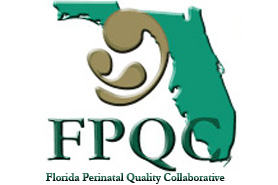The Florida Perinatal Quality Collaborative has graciously agreed to partner with PQCNC and make a very limited number of institution spots available for North Carolina teams to participate in their upcoming Maternal hemorrhage initiative.
The Florida Perinatal Quality Collaborative, District XII American College of Obstetricians and Gynecologists (ACOG), Association of Women's Health, Obstetric, and Neonatal Nurses (AWHONN), Florida Council of Nurse Midwives, Florida Hospital Association, and the Florida Department of Health have partnered to develop a Florida Obstetric Hemorrhage Initiative (OHI). Recognizing that quality and safety are a strategic imperative for an increasing number of health care organizations, this partnership has looked for ways to successfully reduce leading causes of Florida's maternal mortality and morbidity.
Background: Although there is no clear trend, Florida's pregnancy-related mortality ratio (PRMR) has fluctuated from 13.3 in 2005 to 26.2 in 2009. Hemorrhage was one of the top causes of maternal mortality, accounting for 15% of deaths during this time period (FL Pregnancy Associated Mortality Review or PAMR). Hemorrhage is considered to be highly preventable. The California Department of Health (2011) reported that 70% of obstetric hemorrhage related deaths reviewed during a 2002-2003 pregnancy-associated mortality review had a strong or good chance of being prevented (Bingham and Jones, 2012). A study in North Carolina suggested even a higher percentage. Improved quality of medical care has been identified as the most important factor for the prevention of these deaths. More than 90% of the potentially preventable morbidity and mortality due to hemorrhage is because of provider-related factors, notably incomplete or inappropriate management (Della Torre, et al, 2011). A 2011 study found that delay in treatment or diagnosis, ineffective management, and lack of proper preventive measures for hemorrhage led to preventable pregnancy-related deaths and extreme morbidity (Della Torre, et al, 2011).
Changes in clinical practices could have a large effect on preventing hemorrhage (Bingham and Jones, 2012; Bingham, et al, 2011). Because only about 2.9% of births result in hemorrhage, it is a relatively rare phenomenon (Callaghan, et al, 2010). As a result, many hospitals do not have a hemorrhage protocol in place and do not perform drills (Bingham and Jones, 2012). Obstetric teams have "consistently failed to recognize, be ready, and respond" to hemorrhage situations that often end in maternal morbidity and mortality. Hospitals that do have protocols in place may not include all evidence-based strategies or consistently apply them.
The FPQC's OHI Moving Forward: In order to address Florida's pregnancy-related mortality, the Florida Department of Health contracted with the FPQC to convene a group of maternal health, public health, and quality improvement leaders to work on a maternal mortality prevention initiative. The group has developed an obstetric hemorrhage quality improvement initiative focused specifically on Florida hospitals. The FPQC will begin recruiting hospitals in July to implement the first initiative designed using evidence-based strategies.
To read more about the initiative and its launch - please click here.
To learn more about FPQC please visit them on the web.

